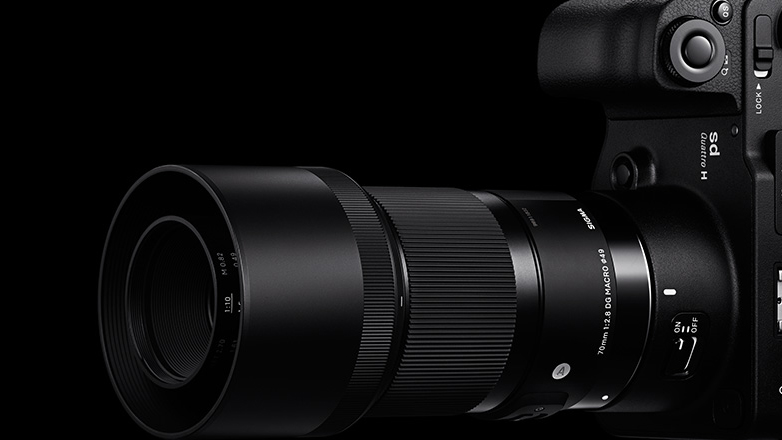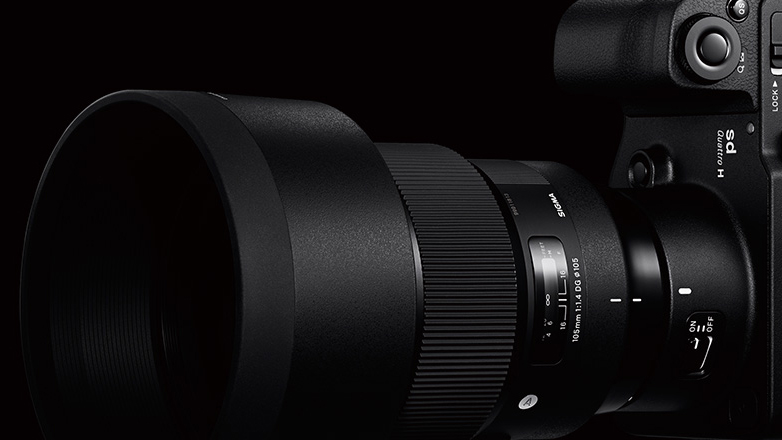Sigma’s high-end Art lens line is gaining two new members and an entirely new mount. During the CP+ Show in Japan on Tuesday, February 27, Sigma announced two new art lenses along with nine of the lenses in the lineup coming to the Sony E mount system. The company adds their first Art line macro with the Sigma 70mm F/2.8 DG Macro, while Sigma calls the new 105mm f/1.4 DG HSM Art the “bokeh master.”
The 70mm isn’t Sigma’s first macro, but it’s the first macro in the company’s high-end Art lens line and as part of the company’s top lens line, Sigma says the 70mm is designed for optimal optical performance. The company says the lens delivers the high resolution and clarity of the Art lens series but is inspired by a classic Sigma lens, the Macro 70mm f/2.8 EX DG.
The lens uses a focus-by-wire, two group floating focus mechanism for more precise autofocus while working with close-ups. The lens can work with subjects as close as 10.2 inches from the front of the lens, for a 1:1 maximum magnification ratio.
The lens is designed with 13 elements in 10 groups, including FLD, SLD, and particle dispersion elements to minimize chromatic aberration, two aspherical elements for enhanced sharpness at close distances and multiple lens coatings to prevent lens flares and ghosting. The exterior of the lens is dust and splash resistant.
While the 70mm is all about up-close detail, the focus of the new Sigma 105mm f/1.4 DG HSM Art lens is bokeh. Designed for high-resolution, full-frame cameras, Sigma says the 105mm is the flagship out of all nine of the company’s f/1.4 Art lenses and the longest focal length available in the line with that ultra-wide aperture.
While other lenses in the series boast the same wide aperture, the longer focal length works to create an even softer background, bringing the company to call the lens a “bokeh master.” Designed with 17 elements in 12 groups, the lens uses three FLD elements, two SLD elements, and an aspherical lens element to minimize chromatic aberration. The company says the lens is also designed to reduce sagittal coma flare, a type of flare that’s normally problematic when shooting the stars. The lens is also weather sealed.
Sigma hasn’t yet released pricing or release dates for the 105mm or the 70mm lens. Both lenses will be available in mounts for Sigma, Nikon, Canon and now, Sony E Mount mirrorless cameras.
Sigma’s Art lenses were largely only compatible with Sony mirrorless cameras using a converter, (with the exception of some of the more recent announcements) but along with bringing the latest two lenses to an E Mount, the company will also be adding E Mount options to seven existing Art lenses, all prime lenses that cover a range between 14mm to 135mm. The company says that, moving forward, new Art lenses will also be offered in the E Mount. The announcement keeps a promise the company made last year to expand into the E mount.





